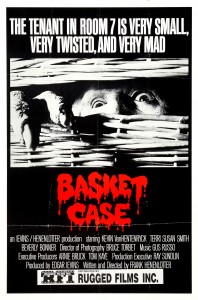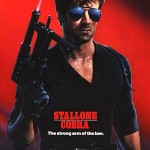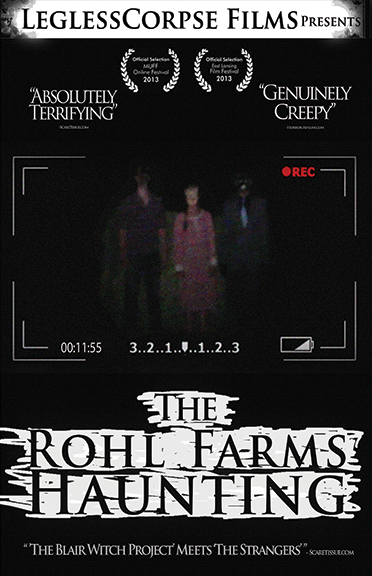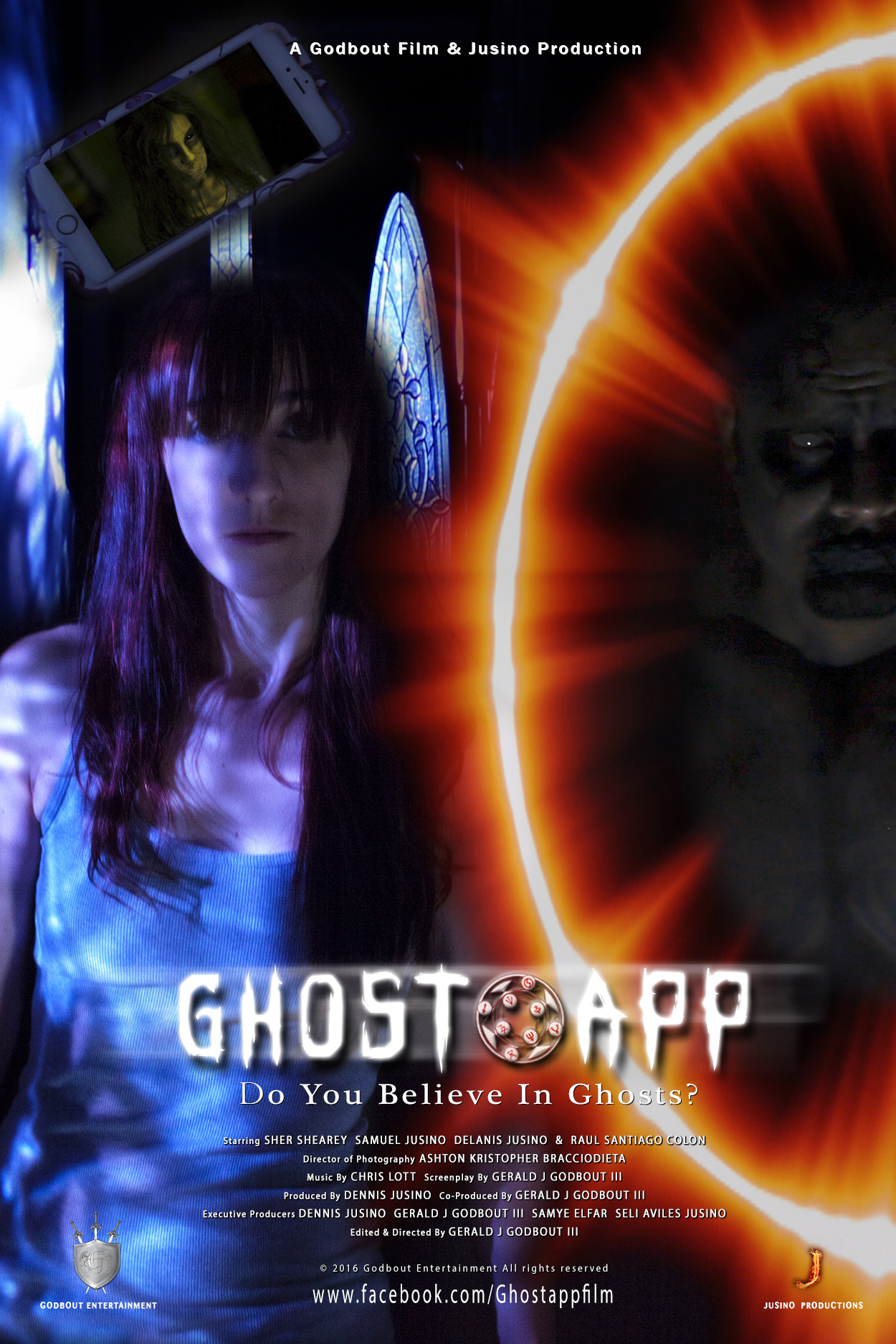
Frank Henenlotter spoke with JP Mulvanetti at the Horrorthon, Dublin’s annual horror film festival in which four of his films featured this year.
“Where I grew up on Long Island, there was only one theatre that would show these exploitation pictures.” says Frank Henenlotter, the laid back, easy-to-laugh director of cult classics such as Basket Case, Brain Damage and Frankenhooker, “Back then, the Catholic church had their grip on the motion picture industry. If they didn’t like a film, the priests would alert their parish not to go see it. The Catholic church in that parish I grew up in condemned the theatre itself that would show these films. Under pain of mortal sin, you entered that theatre! You’d burn in hell! So, I couldn’t wait to see films there! Every year, when I was growing up, and attending mass, I’d have to raise my hand and take the legion of decency pledge, and all I kept thinking about was that, ‘some day, if I can make movies, I’m gonna put in as much gratuitous nudity and tits for no reason other than to drive all the catholics crazy!”
It seems like the perfect mission statement for a man who would go on to become a household name among  horror and exploitation fans. Growing up in New York in the 60’s, he was instantly drawn to the seedy lures of 42nd street, infamous for its hookers, drugs and collection of cheap cinemas that specialised in sex and exploitation films. Despite cutting class regularly to see these films – and still getting straight A’s – he managed to find time to nurture his love for making films himself. “I never thought about being a commercial filmmaker, in fact I still don’t think I am. I always just see myself as a guy who loves movies that just happened to have made a few. I was making movies since I was 13, on 8mm, and then I did 16mm with sound, but I made them to make them, I never made them to show them. Many of them I didn’t finish, I’d get bored, and also, it was the most self-indulgent crap because I was making it for me! And I think the closest I have to those kind of films is Basket Case, it’s really self-indulgent; over-the-top with its mix of horror and humour. Is Basket Case a comedy or a horror? I dunno.”
horror and exploitation fans. Growing up in New York in the 60’s, he was instantly drawn to the seedy lures of 42nd street, infamous for its hookers, drugs and collection of cheap cinemas that specialised in sex and exploitation films. Despite cutting class regularly to see these films – and still getting straight A’s – he managed to find time to nurture his love for making films himself. “I never thought about being a commercial filmmaker, in fact I still don’t think I am. I always just see myself as a guy who loves movies that just happened to have made a few. I was making movies since I was 13, on 8mm, and then I did 16mm with sound, but I made them to make them, I never made them to show them. Many of them I didn’t finish, I’d get bored, and also, it was the most self-indulgent crap because I was making it for me! And I think the closest I have to those kind of films is Basket Case, it’s really self-indulgent; over-the-top with its mix of horror and humour. Is Basket Case a comedy or a horror? I dunno.”
Basket Case would eventually become his calling card, but it certainly didn’t happen over night. Even getting the film completed was a struggle, in the way every low-budget film can be.”I was doing one of my 16mm shorts, and I ran into a friend-of-a-friend, Edgar Ievins (producer of Basket Case), and he said, if I can raise some money, do you wanna make a commercial movie? I said, ‘of course’, and we figured he could raise about $200, 000. Turned out, he could raise nothing, which wasn’t to do with him not trying his best, but it was just the reality of it. So by then, I was primed to do it, so, regardless of reality, I said, ‘let’s start filming next week. I have $8000 in the bank, and we’ll shoot with that’, so he matched it with $8,000 he had. Basket Case was made over a period of a year, all depending on when we had money to shoot. Most film have dailies; we had monthlies, because I’d shoot stuff and we couldn’t afford to take it out of the lab. It’s not how movies should be made, but nothing about that film is how movies should be made.”
If it was just a film filled with sleaze and gore, it probably wouldn’t be as well-remembered as it is now; what  surprises you with Basket Case on your first viewing is that there is a genuine sense of care and pathos with the characters. Behind the cheap monster effects and gore is a sad story of brotherly love. “When I was trying to find a name for a horror film, I thought , ‘Basket Case’, and it was a malignant jack-in-the-box, and that’s all it was. When I started writing it… I couldn’t get very far, because I kept saying, ‘why would anybody walk around with a monster in a basket?’ and I was sitting in Times Square and thought, what if they’re brothers? And then it wrote itself.” This sense of depth carries over into his other films, with Brain Damage being an a film about drug addiction, and surprisingly Frankenhooker, despite it having one of the finest exploitation titles ever, can also be seen to be about the dangers of both drugs and the media’s idea of what a perfect woman looks like. “That was very deliberate, that’s why he (Jeffrey, played by James Lorinz) got punished at the end. He tried to fix her, in his way, and that’s why he paid the price. But also in terms of liking the character, the biggest problem was how can Jeffrey Franklin kill? He can’t just kill these women? New York was in the grips of the crack explosion at the time. When I was filming Brain Damage, we were working on a street that was hooker central, literally, and in the mornings, I’d walk to where we were shooting, and there were two items that would cover the sidewalk – used condoms and crack vials. So your foot would either squish or crunch. And it was that awareness of it that seeped into the film. Why don’t we make it Super Crack? Everyone was doing crack”.
surprises you with Basket Case on your first viewing is that there is a genuine sense of care and pathos with the characters. Behind the cheap monster effects and gore is a sad story of brotherly love. “When I was trying to find a name for a horror film, I thought , ‘Basket Case’, and it was a malignant jack-in-the-box, and that’s all it was. When I started writing it… I couldn’t get very far, because I kept saying, ‘why would anybody walk around with a monster in a basket?’ and I was sitting in Times Square and thought, what if they’re brothers? And then it wrote itself.” This sense of depth carries over into his other films, with Brain Damage being an a film about drug addiction, and surprisingly Frankenhooker, despite it having one of the finest exploitation titles ever, can also be seen to be about the dangers of both drugs and the media’s idea of what a perfect woman looks like. “That was very deliberate, that’s why he (Jeffrey, played by James Lorinz) got punished at the end. He tried to fix her, in his way, and that’s why he paid the price. But also in terms of liking the character, the biggest problem was how can Jeffrey Franklin kill? He can’t just kill these women? New York was in the grips of the crack explosion at the time. When I was filming Brain Damage, we were working on a street that was hooker central, literally, and in the mornings, I’d walk to where we were shooting, and there were two items that would cover the sidewalk – used condoms and crack vials. So your foot would either squish or crunch. And it was that awareness of it that seeped into the film. Why don’t we make it Super Crack? Everyone was doing crack”.
Frankenhooker seemed like a conscious decision to focus less on horror and more on chuckles and nudity. Much of that came down to the fantastic performance from James Lorinz, “A lot of was ad-libbed by James; he’d come up with lines, and as he said; ‘If I laughed, we used it. If I didn’t laugh, we’d lose it’. Simple as that. 90% of the time, I laughed. He should be a mega star today. Whatever happened was nothing to do with his talent.”
By the end of the 80’s, the MPAA had a fairly strong grip on the horror industry, and had the last word on the levels of gore, sex and violence that could ultimately be shown in an ‘R’ rated film. Despite the intentionally softer approach to the violence, they still weren’t a fan of Frankenhooker; “When the film was submitted for rating, the head of the MPAA called up Glickenhaus-Shapiro and said, ‘Congratulations, you’re the first film rated ‘S’ – we were like, ‘you mean ‘S’ for ‘sex’? – ‘No, ‘S’ for ‘Shit’. Now, that is so far beyond the pale of what a ratings board should be doing…I didn’t even find them people worth answering too.” Despite this increasingly hostile climate, Frank still managed to get these films made in the late 80’s and early 90’s, including two belated sequels to Basket Case. “Many people thought Basket Case was a fluke… it changed after Brain Damage when people thought, ‘oh, maybe he can be a real filmmaker’. The  company that distributed Brain Damage hated it, and they buried it, and it flopped theatrically. It got terrible reviews. Six months later it got released on home video, and got immediately discovered. Get’s called a ‘cult classic’. It doesn’t even make sense! But I enjoyed doing it, and I wanted to do more, especially if I could get a few more dollars for it. The difference for me of a few dollars was how Basket Case looked, and how Brain Damage looked. Suddenly I was filming in 35mm, building sets… I went up to see Jim Glickenhaus (director of cult classic, The Exterminator), and he had just started his own production and distribution company… I pitched him Frankenhooker on the spot, made up the plot as we were talking, and the more he laughed the more he thought. ‘I wanna do this one’. And he said, what else you got? I said, there’s always Basket Case 2. I’d people asking me about that for years, but I didn’t wanna just make Basket Case pictures. I mean, I love part two, I deliberately went in the opposite direction. I didn’t want to do a sequel that’s a remake. So I took a tip from Todd Browning and put them in a community of freaks, and it was wonderful, I love the look and scope of the film. Part 3 was a disaster, it shouldn’t have been made. I originally wanted to do the film about childbirth, and at last-minute they said no. They wanted the best for me and film… there was no animosity, but the exploitation market was dying, and the theatres that had previously shown Basket Case and Frankenhooker were gone…”
company that distributed Brain Damage hated it, and they buried it, and it flopped theatrically. It got terrible reviews. Six months later it got released on home video, and got immediately discovered. Get’s called a ‘cult classic’. It doesn’t even make sense! But I enjoyed doing it, and I wanted to do more, especially if I could get a few more dollars for it. The difference for me of a few dollars was how Basket Case looked, and how Brain Damage looked. Suddenly I was filming in 35mm, building sets… I went up to see Jim Glickenhaus (director of cult classic, The Exterminator), and he had just started his own production and distribution company… I pitched him Frankenhooker on the spot, made up the plot as we were talking, and the more he laughed the more he thought. ‘I wanna do this one’. And he said, what else you got? I said, there’s always Basket Case 2. I’d people asking me about that for years, but I didn’t wanna just make Basket Case pictures. I mean, I love part two, I deliberately went in the opposite direction. I didn’t want to do a sequel that’s a remake. So I took a tip from Todd Browning and put them in a community of freaks, and it was wonderful, I love the look and scope of the film. Part 3 was a disaster, it shouldn’t have been made. I originally wanted to do the film about childbirth, and at last-minute they said no. They wanted the best for me and film… there was no animosity, but the exploitation market was dying, and the theatres that had previously shown Basket Case and Frankenhooker were gone…”
As most horror fans know, the genre was mainly relegated to straight-to-video releases in the 90’s, with most of the smaller cinemas closing up due to the rise of the bigger chains. 42nd street was essentially cleaned up, and the theatres closed their doors. While some filmmakers made their bread-and-butter on video, such as Charles Band, it was a tougher time for those wanting theatrical releases. It lead to Frank dropping out of directing for nearly 15 years. “Frankenhooker did tremendous business, but it wasn’t well received. Because of the loss of all these theatres, the exploitation circuit died. No more blacksploitation, no more cheap action films, no more sexploitation. All the companies that I knew of, were all gone. There was just no market for it anymore.” Frank was changing too. “I wanted to fuse arthouse weirdness with surrealism and keep it exploitation, but because of my track record, all I heard from the people I went to was, ‘We don’t like this, but we’d love to do Basket Case 4‘. After two years of this, I decided, maybe I’ve had enough of it, and fortunately I got involved with Something Weird Video, and was still contaminating the world with exploitation films.”
Something Weird Video was founded by Mike Vraney in the early 90’s, and specialised in releasing films such  as those by cult producers Harry Novak, David Friedman and HG Lewis. The goal of Something Weird? “We used to release the kind of films that the rest of the world wished had been forgotten!” Despite the joke, Frank and Mike played a vital role in preserving a neglected part of film history, and continued to do so until Mike passed away after a lengthy battle with lung cancer in early 2014. “I don’t think any of us knew how appreciated Something Weird was until after Mike’s death, when I started reading the tributes, about how so many people were affected by these films. I wrote the copy for all the films, and I geared it to a 15-year-old kid. I wrote it so you’d think, ‘there’s a party going on in this case, and if you don’t buy it, you ain’t invited’. We did tremendous business; I made more money from Something Weird than I ever did from any of my movies.”
as those by cult producers Harry Novak, David Friedman and HG Lewis. The goal of Something Weird? “We used to release the kind of films that the rest of the world wished had been forgotten!” Despite the joke, Frank and Mike played a vital role in preserving a neglected part of film history, and continued to do so until Mike passed away after a lengthy battle with lung cancer in early 2014. “I don’t think any of us knew how appreciated Something Weird was until after Mike’s death, when I started reading the tributes, about how so many people were affected by these films. I wrote the copy for all the films, and I geared it to a 15-year-old kid. I wrote it so you’d think, ‘there’s a party going on in this case, and if you don’t buy it, you ain’t invited’. We did tremendous business; I made more money from Something Weird than I ever did from any of my movies.”
After a lengthy time away from behind the camera, Frank found interest growing in him making another film. There was the failed ‘Sick in the Head‘ which Fangoria intended producing, but the money fell through early on. His next project ended up being 2008’s Bad Biology. “The only reason I got back into it with Bad Biology was a friend of mine, rapper, R.A. Thorburn, said to me, ‘I think I can raise some money, is it enough to make a film with?’, I laughed and said, ‘not really, but why don’t we? I wanna shoot it in 35mm, which means we’ve money for nothing else!’ That was a joy, but again, first day on the set was just like any other day on set, it wasn’t like ‘oh, I’m doing it again! Filmmaking is very hard work.”
Since then, Frank has been busy. He co-directed the entertaining documentary, Herschell Gordon Lewis: The  Godfather of Gore, and is still touring with his newest documentary, That’s Sexploitation! “Audiences seem to be howling when they see it. They are saying to me, ‘they really made these films?’ If anyone should be telling this story, it’s me, Dave Friedman and Mike Vraney. Mike and I spent almost a solid year just picking the clips… I still sit there watching it going, ‘what the fuck?‘. What about feature films? “I’ve just finished a feature that is surprisingly NOT a horror film, or exploitation. It’s surprisingly mainstream, titled; ‘The Art Thieves”. It’s a true story of some friends of mine who decided to ‘acquire’ a piece of Banksy art by going down to New Orleans and removing it off the side of an abandoned building. They called me midway through, and I was just shaking my head, and I said, ‘guys, when you get back, lets turn this into a script.” It took a couple of years to get the money together, but we made it, and it’s a film so off the beaten path for me that I don’t know what I have, but then again, I’ve never been sure of what I had when a film is done.” He doesn’t seem to be finished documenting, either. “I’m shooting a documentary now on comic book artist, Mike Diana, who was the first, and only comic book artist convicted of obscenity in the United States. We’ve already interviewed the district attorney who wanted to put him away for three years in prison for drawing what he thought was a dirty picture.”
Godfather of Gore, and is still touring with his newest documentary, That’s Sexploitation! “Audiences seem to be howling when they see it. They are saying to me, ‘they really made these films?’ If anyone should be telling this story, it’s me, Dave Friedman and Mike Vraney. Mike and I spent almost a solid year just picking the clips… I still sit there watching it going, ‘what the fuck?‘. What about feature films? “I’ve just finished a feature that is surprisingly NOT a horror film, or exploitation. It’s surprisingly mainstream, titled; ‘The Art Thieves”. It’s a true story of some friends of mine who decided to ‘acquire’ a piece of Banksy art by going down to New Orleans and removing it off the side of an abandoned building. They called me midway through, and I was just shaking my head, and I said, ‘guys, when you get back, lets turn this into a script.” It took a couple of years to get the money together, but we made it, and it’s a film so off the beaten path for me that I don’t know what I have, but then again, I’ve never been sure of what I had when a film is done.” He doesn’t seem to be finished documenting, either. “I’m shooting a documentary now on comic book artist, Mike Diana, who was the first, and only comic book artist convicted of obscenity in the United States. We’ve already interviewed the district attorney who wanted to put him away for three years in prison for drawing what he thought was a dirty picture.”
Whatever might come down the line from Frank Henenlotter in the future, be it horror, drama or documentary, he’s still a filmmaker looking for a challenge and optimistic about the future. The sleazepit cinemas may be long closed and the video stores boarded up, but the films are still alive for Frank and his fans, in glorious blood-soaked Technicolor.


 by
by 


Tremendous stuff, one of the best things I’ve read about this director
[…] Frank Henenlotter – Basket Cases, Frankenhookers and Sexploitation! […]